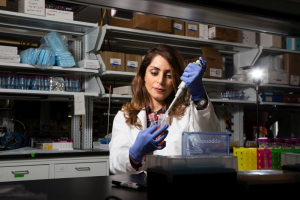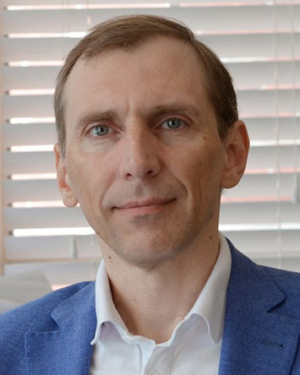Interdisciplinary Research Seeks Direct and Efficient Delivery of Macromolecules to Cells
Mathematicians and biomedical engineers are working to develop a simple, safe and efficient system to deliver macromolecules to a cell’s interior. The work could lead to improved use of macromolecules as therapeutics.
A National Science Foundation grant of $481,000 supports University of Houston associate professor of mathematics Annalisa Quaini, along with mathematics professor Maxim Olshanskii and biomedical engineering assistant professor Sheereen Majd. The collaboration is truly cross-disciplinary. Quaini and Olshankii’s mathematical and computational expertise at UH’s College of Natural Sciences and Mathematics will pair with Majd’s research of molecular processes across biological membranes.
Majd, on the Cullen College of Engineering faculty, wants to develop a way to deliver macromolecules, like peptides and proteins, to cells because macromolecules have tremendous potential as a therapeutic for diseases. So far, their clinical applications have been limited, as their delivery is more challenging than small molecule therapeutics.
"There has been a huge number of macromolecules identified as therapeutics in recent years,” Majd said. “Yet their application in clinic has really remained limited due to a lack of a good delivery platform.”
Creating a New Class of Liposomal Carrier
There is a promising delivery platform through a family of carriers, called fusogenic liposomes. However, they have a key shortcoming.
Although these liposomes have high concentrations of fusogenic lipids, which are needed to cross cellular membrane barriers, these lipids lead to toxicity when tested in vivo.
This problem could be solved through membrane phase-separation, a mechanism to locally concentrate specific lipids in dense “patches” on the surface of liposomes. That way, the liposomes can enter the cell, without causing toxicity.
The team will apply mathematical, computational and experimental tools to design and develop patchy fusogenic liposomes, a new class of liposomal carriers to aid in the delivery of macromolecules to cells.
"With our numerical simulations, we help predict biological phenomena in order to avoid expensive and time-consuming in vitro experiments,” Olshanskii said. “We also try to visualize phenomena on scales that cannot be directly observed with current techniques like microscopy.”
Ultimately, development of this macromolecule cell delivery method could make way for better cancer treatments and regenerative medicine.
UH Bridge Funding Helped Facilitate Collaboration
Quaini said she and Olshankii, “searched for people at UH who were working on projects that could benefit from computational and mathematical tools.” They began working with Majd in 2018.
Before being awarded the NSF grant, the group received support from UH through the Bridge Funds Program that supports faculty not supported by other funding and “bridges” the gap toward the next funding opportunity.
"Thanks to this internal award,” Quaini said, “we managed to keep the work alive, and gathered sufficient and convincing preliminary results that led to the NSF award.”
The NSF will fund the group’s work until 2023.


